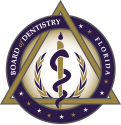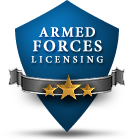Click on the appropriate tab below to see the Initial Licensing Requirements, Process, Fees, Statutes and Administrative Rules for Sedation Permits for General Anesthesia.
A permit shall be issued to an actively licensed dentist authorizing the use of general anesthesia or deep sedation at a specified practice location or locations on an outpatient basis for dental patients provided the dentist:
- Has completed a minimum of one year residency program accredited by the Commission on Dental Accreditation in dental anesthesiology or has completed an oral and maxillofacial surgical residency program accredited by the Commission on Dental Accreditation beyond the undergraduate dental school level; or
- Is a diplomate of the American Board of Oral and Maxillofacial Surgery; or
- Is eligible for examination by the American Board of Oral and Maxillofacial Surgery; or
- Is a member of the American Association of Oral and Maxillofacial Surgeons;
A dentist employing or using general anesthesia or deep sedation shall maintain a properly equipped facility for the administration of general anesthesia, staffed with supervised assistant/dental hygienist personnel, capable of reasonably handling procedures, problems and emergencies. The facility must have the equipment capability of delivering positive pressure oxygen ventilation. Administration of general anesthesia or deep sedation requires at least three individuals, each appropriately trained: the operating dentist, a person responsible for monitoring the patient, and a person to assist the operating dentist.
A dentist employing or using general anesthesia or deep sedation and all assistant/dental hygienist personnel must be certified by an American Heart Association or American Red Cross or equivalent Agency sponsored cardiopulmonary resuscitation course at the basic life support level. This should include one person CPR, two person CPR, infant resuscitation and obstructed airway, with a periodic update not to exceed two years. A dentist and all assistant/dental hygienist personnel shall also be trained in the use of either an Automated External Defibrillator or a defibrillator and electrocardiograph as part of their cardiopulmonary resuscitation course at the basic life support level. In addition to CPR certification, a dentist utilizing general anesthesia or deep sedation must be currently trained in ACLS (Advanced Cardiac Life Support) or ATLS (Advanced Trauma Life Support).
Applications are initially reviewed by board staff and staff will notify the applicant in writing of any deficiencies. Complete applications are sent to the chairman of the Anesthesia Committee for review. Once the application has been approved by the chairman, staff will notify the applicant in writing of the current application status and will provide the applicant’s information to an anesthesia consultant contracted with the board to evaluate applicants and perform office inspections. The consultant will contact the applicant to set up a time to observe the administration of an anesthetic to a patient in the dental office as well as conduct an inspection of the office for required drugs and equipment.
Once the consultant has returned the paperwork indicating a passed inspection, staff will add the anesthesia qualification to the dental license and prepare a letter to the licensee to use as proof of permit until the licensee receives the updated dental license.
Certified check or money order should be made payable to the Florida Department of Health.
| TOTAL FEE | $300.00 |
Click on Chapter or Section Number to View
Florida Statutes
Section 466.017: Prescription of drugs; anesthesia.
Florida Administrative Codes
Rule 64B5-14: Anesthesia





